Why Vargiani Is the Perfect Destination for Nature...
Vargiani on Mount Parnassos offers stunning...
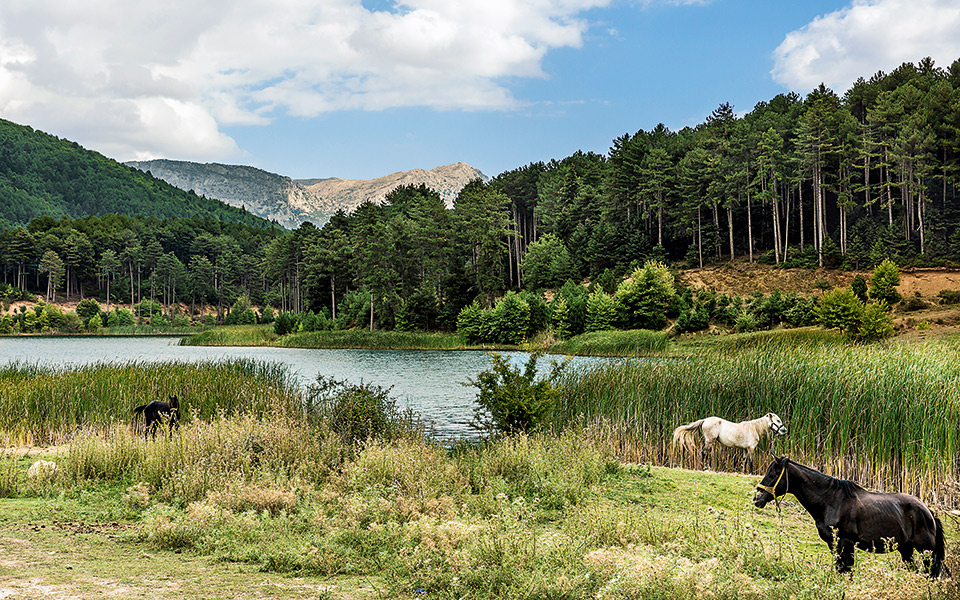
Lake Doxa may be man-made and not even 20 years old, but it looks as though it’s been there forever.
© Dionysis Kouris
Hang posters of the Alps and Mount Ziria side-by-side and you’d have trouble deciding which belonged to Switzerland and which to Greece. At least that’s what Greek travel brochures love to claim, as they try to wean tourists away from the more familiar sun, sand and sea holidays on the islands. This particular chunk of the Peloponnese boasts eight peaks – snow-streaked during the winter months, all higher than 2,000 meters – green plateaus, thick fir forests, three lakes and a smattering of chalets or chalet-like hotels.
But where in Switzerland could you find so many layers of history and myth, echoes of gods and legendary heroes, and a lake-side monastery whose abbot makes rose-petal jam?
To conduct your own investigation, start your adventures at Xylokastro on the Gulf of Corinth and head first to Ziria’s three main villages, Lower, Middle and Upper Trikala, whose name means “three good things”: abundant water, fertile soil and a healthy climate.
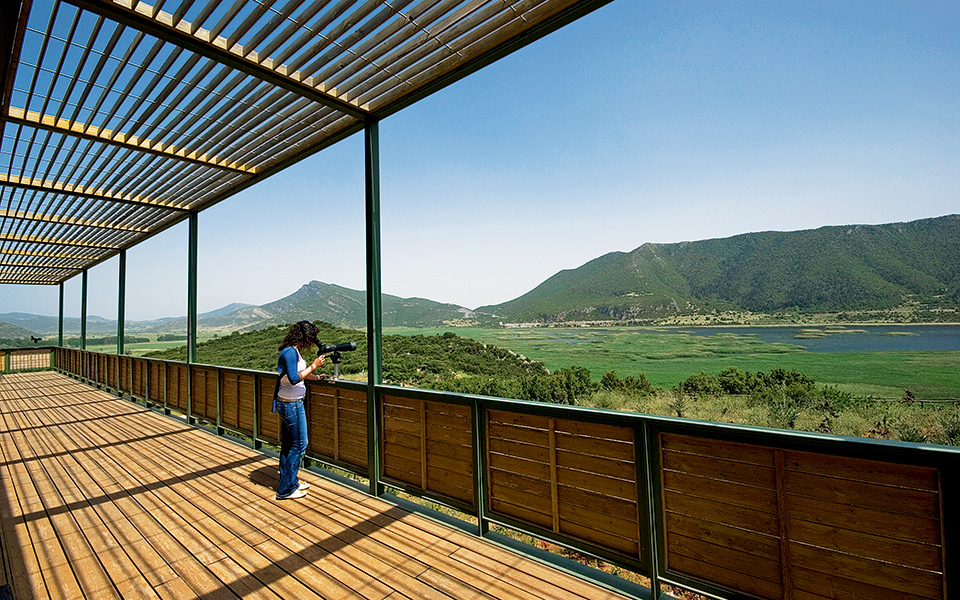
More marsh than water, Lake Stymphalia is nevertheless home to more than 140 bird species.
When I initially discovered the mountain, also called Kyllini, in the early 00s, Athenians were turning it into an in-spot for weekends, using the villages as a base for trekking or off-road explorations in shiny SUVs. Comfortable small hotels sprang up among homes abandoned after the war and tavernas opened serving local cheeses, lamb chops and meaty stews with homemade pasta, for these were traditionally sheep-herding communities. Hearing tales of extreme beauty, we set off in our low-slung, not-so-spiffy car. At first, we were disappointed, not by the scenery but by the questionable esthetics of some of the local cement houses and dilapidated buildings, especially in Ano (Upper) Trikala. But in Mesaio (Middle) Trikala, we found an embarrassment of attractive stone pensions and ended up making friends with our 30-something hotel owner who’d given up Los Angeles for rustic serenity.
The next day he handed us a map of hiking trails and off we drove to a wide plateau, where three of them begin. We had a choice of slogging up to the bald peaks (actually a fairly easy 2-hour hike), the knee-crippling descent of the Flambouritsa Gorge and a gentle, cone-strewn path to the cave where Hermes was born to Zeus and Maia. Meanwhile, we had learned that Ziria is Hermes’ mountain and that his first deed after emerging from his birthplace was to fashion a lyre out of a tortoise shell and some strands of sheep gut. This peak’s name, Helidorea, commemorates this event. The wing-footed god later invented the pipes played by his son Pan in settings like this.
Lacking a flashlight, we never did enter the cave, which has a tiny entrance but opens up to 1,200 sq.m. of seven chambers where rare white stalactites mingle with brightly colored ones. Instead, we retraced our steps – no hardship when there were yellow tulips and scores of other wild flowers to photograph – and then drove up to a shallow Lake Dasiou. The word “Limni” (lake) painted in red on a breeze-block pointed the way. Be warned, though. In summer this lake resembles a dried puddle.
“ Ιn Mesaio (Middle) Trikala, we found an embarrassment of attractive stone pensions and ended up making friends with our 30-something hotel owner who’d given up Los Angeles for rustic serenity. ”
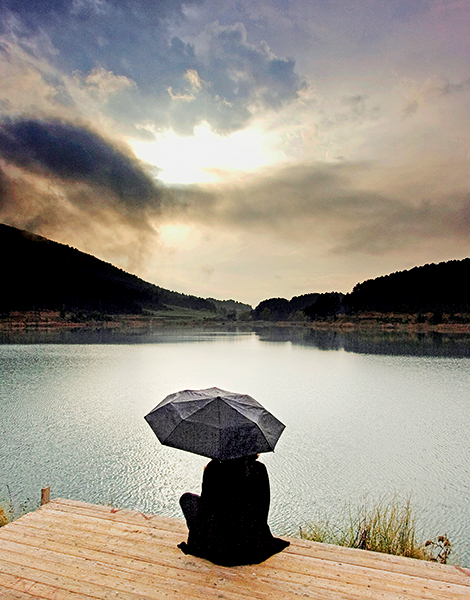
Doxa means “glory” in Greek and the lake is glorious in any weather.
© Perikles Merakos
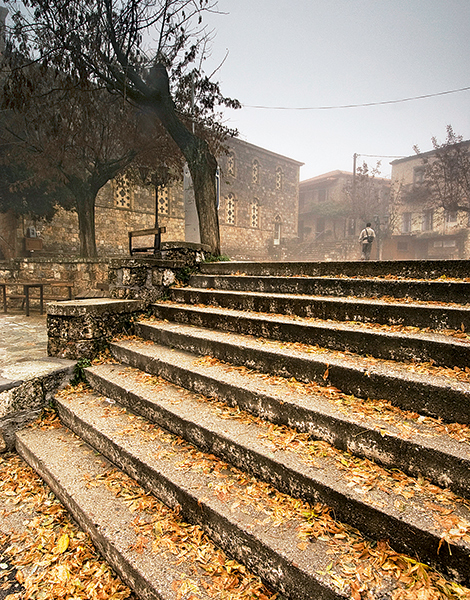
Autumn is a good time to visit Feneos and nearby Goura, where there are boutique hotels with blazing fireplaces on a misty evening.
© Clairy Moustafellou
You could spend a week following hiking trails, but after two days we took to our wheels and drove from Trikala over to Karya, which as the name implies is one big walnut orchard, passing under giant reddish bluffs that looked more like Colorado than Switzerland, until we could see the Feneos valley. Framed on one side by Ziria and on the other by Helmos, it was obviously an alluvial plain in some remote era. Twenty years ago a sea of wheat rippled at window level, while now you might see fields of pulses, for the Feneos valley has since become known for its delicious organically grown beans, fava and even Beluga (black) lentils.
Here the main attraction is not Ancient Feneos, of which no trace remains, despite the signs, but rather Lake Doxa. Created in 1997, by men not nature, it did not exist when we first came camping, sometime in the late 70s, but it has a timeless beauty. The stone church of Aghios Fanourios, which used to survey the plain from a round hill, now protrudes from water reflecting every shade of green. To the north, the red and robin’s-egg-blue walls of Aghios Georgios Monastery looked somewhat out of place amid the dense firs, but drew us like a magnet.
Although little there is older than the mid-18th century, every inch of the church walls was covered with vivid frescoes. Father Gennadios, the abbot who presided over two other monks, showed us the view and fed us spoonfuls of his own exquisite rose-petal jam. When he learned my origins, he said with a twinkle: “I haven’t been to America, but I’ve been to Australia and Europe, and believe me, nothing can compare with what we have here in Greece.”
“ Here the main attraction is not Ancient Feneos, of which no trace remains, despite the signs, but rather Lake Doxa. Created in 1997, by men not nature, it did not exist when we first came camping, sometime in the late 70s, but it has a timeless beauty. ”
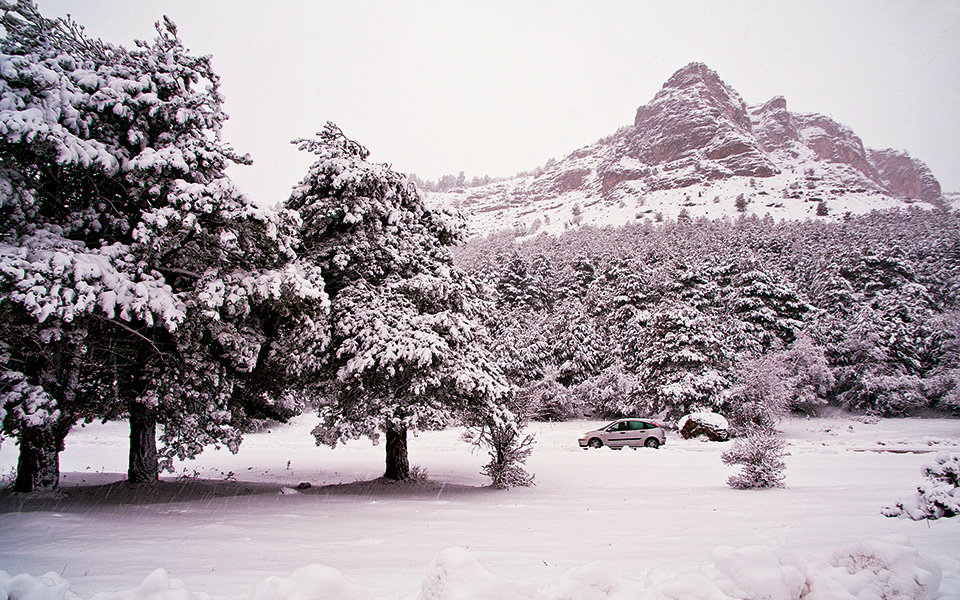
Covered in white during the winter months, Feneos is fast becoming a popular weekend destination.
© Clairy Moustafellou
Moving slowly east from Feneos, after a delightful lakeside lunch, we followed sinuous roads to Kastania, another favorite weekend destination, to Oreini Korinthia’s (mountainous Corinthia) third lake. With its surface almost completely covered by reeds and grasses, Stymphalia is more marsh than water, owing to its fragile ecosystem. Unlike most lakes, it is a karst lake whose water level varies according to the season and occasionally vanishes altogether. Underground springs feed it and its bed contains swallow holes (katavothres in Greek) which at times suck the water back into the earth. Mythology lovers will remember it as the habitat of the frightening birds with iron wings, beaks and claws that Hercules subdued as his fourth labor. They fed on human flesh and when they flew, they blocked out the sun.
These monsters have been replaced by some 140 bird species that make temporary or permanent homes in this southernmost mountain wetlands in the Balkans. Even if you can only spot a few, you can learn much more about them and the other denizens of the lake district, as well as the interaction of humans over the ages, in the exceptional new museum dedicated to the environment close by. The museum is part of the Piraeus Bank’s network of nine dedicated to traditional professions. Award winners, they number among the finest in Greece for both architectural design and content.
For more material nourishment in the vicinity, so many tavernas offer suckling pig or spitted lamb you may have trouble deciding where to eat. But if it’s fondue you’re craving, then you’ll have to go to Switzerland.
“ The museum is part of the Piraeus Bank’s network of nine dedicated to traditional professions. Award winners, they number among the finest in Greece for both architectural design and content. ”
Vargiani on Mount Parnassos offers stunning...
At any time of year –...
A visit to the thermal waters...
Three traditional products serve as both...